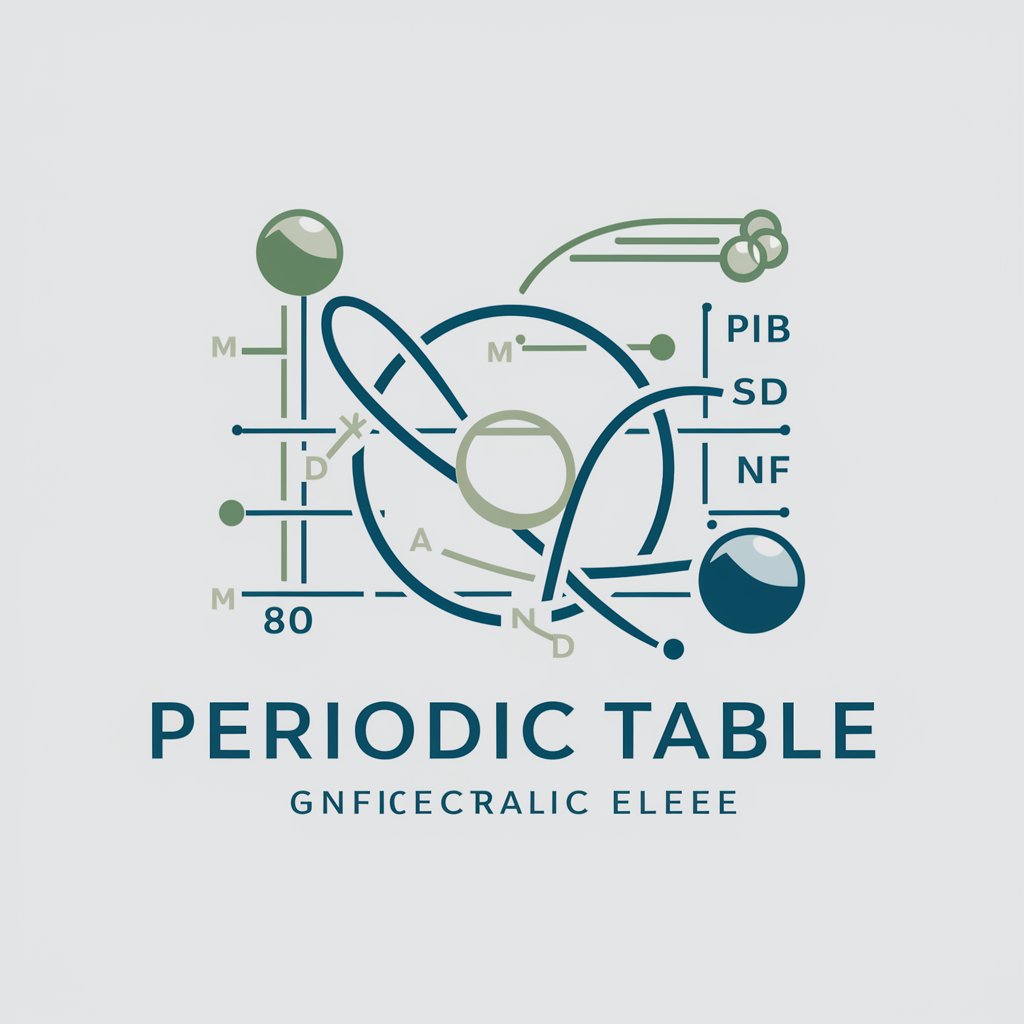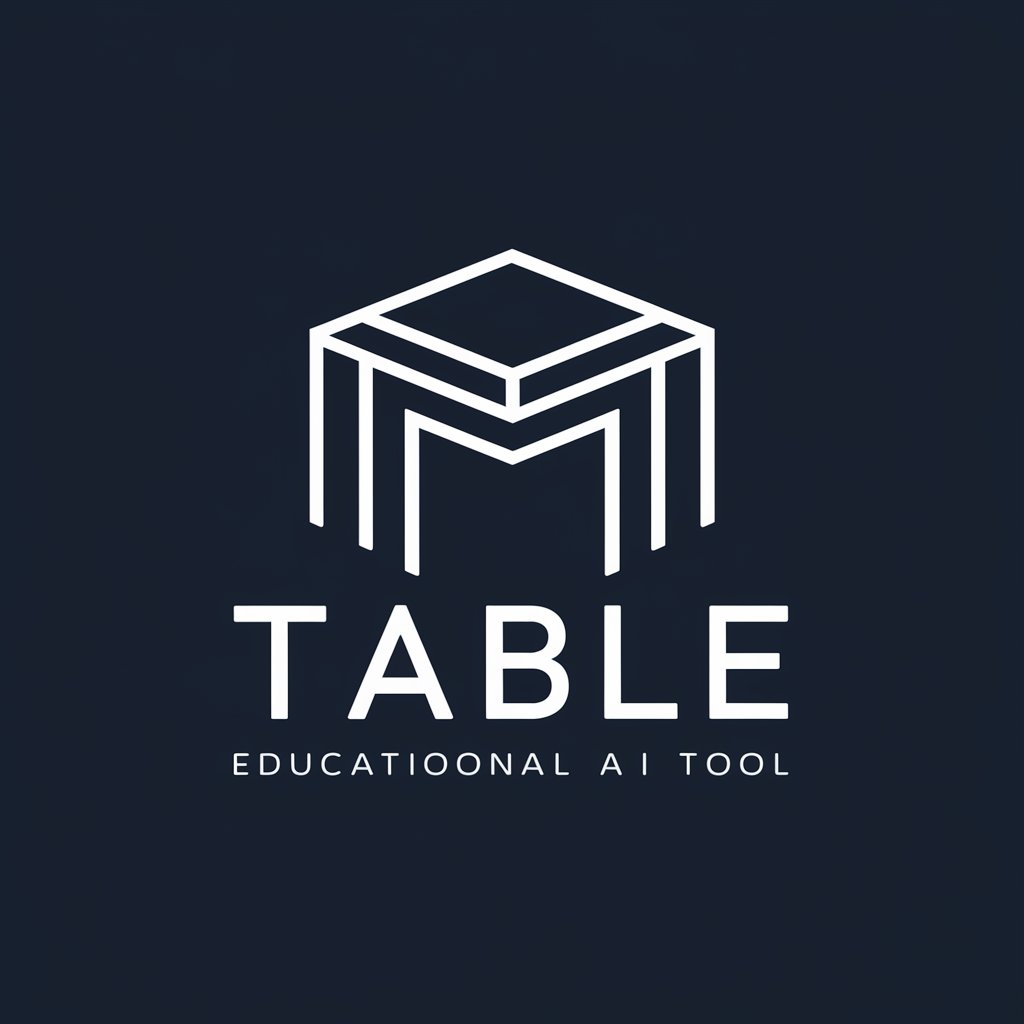Periodic Table - Elemental Analysis & Calculations

Welcome! Let's explore the periodic table together.
Exploring chemistry with AI-driven insights
Tell me about the properties of carbon.
What is the electron configuration of oxygen?
Can you explain the uses of noble gases?
Provide detailed information about the element with atomic number 29.
Get Embed Code
Overview of Periodic Table
Periodic Table, as an educational tool, is designed to offer in-depth information and insights into the periodic table and its elements. Its core functionality encompasses providing accurate, current data on each element's atomic number, atomic weight, electron configuration, and other key properties. Beyond simple data provision, it engages users through interactive capabilities such as image creation related to chemical elements and performing chemical calculations. This tool is built with the intent to make learning about the periodic table more accessible and engaging, integrating both visual and computational methods to enhance understanding. For example, a user could request a visually detailed image of an element's electron configuration or calculate the molar mass of a compound, illustrating the tool's practical application in both educational settings and real-world chemical analysis. Powered by ChatGPT-4o。

Key Functions of Periodic Table
Element Information Retrieval
Example
Providing the atomic mass, electron configuration, and reactivity series of Oxygen.
Scenario
A student preparing for a chemistry exam needs to understand Oxygen's properties and behavior in reactions. They use Periodic Table to get accurate and comprehensive details, facilitating a deeper understanding for their exam preparation.
Chemical Calculation
Example
Calculating the molar mass of sulfuric acid (H2SO4).
Scenario
A chemical engineer working on the formulation of an industrial process needs to calculate the molar mass of compounds involved. They use Periodic Table to accurately determine these values, ensuring precise measurements and efficiency in their work.
Image Creation
Example
Generating an image illustrating the electron shell model of Carbon.
Scenario
An educator designing a chemistry course seeks engaging materials to explain complex concepts like electron configurations. They use Periodic Table to generate detailed, educational images, enhancing the learning experience for students.
Target Users of Periodic Table
Students
Students at various educational levels benefit from using Periodic Table to understand the fundamental concepts of chemistry. Whether for homework, exam preparation, or general interest, this tool provides a rich, interactive learning environment.
Educators
Educators in chemistry and related fields find Periodic Table invaluable for preparing lesson plans, visual aids, and interactive learning sessions. It enhances their teaching by offering accessible information and creative ways to present chemical concepts.
Chemical Professionals
Professionals in chemistry-related fields, such as chemical engineering, pharmaceuticals, and research, use Periodic Table for quick access to chemical data and calculations. This aids in research, development, and operational tasks, streamlining processes and ensuring accuracy.

How to Use Periodic Table
Start Free Trial
Begin by accessing yeschat.ai to start your free trial, enabling immediate use without the need for a login or ChatGPT Plus subscription.
Choose Your Element
Navigate to the 'Elements' section to select any element from the periodic table. This section provides detailed information on each element, including atomic number, weight, and electron configuration.
Utilize Calculators
Explore the 'Calculators' feature for converting units and calculating molar mass, ideal for complex chemical calculations and enhancing academic or professional projects.
Visualize with Images
Request custom images related to the periodic table and its elements for visual learning, presentations, or educational content creation.
Ask Complex Questions
Utilize the tool's advanced AI capabilities to ask in-depth questions about chemical properties, reactions, and periodic table trends for comprehensive and detailed answers.
Try other advanced and practical GPTs
table
Simplifying Learning with AI-Powered Tables

Nature's Table
Elevate vegan cuisine with AI-powered guidance.

Table Master
Simplify Data with AI-Powered Tables

Table Master
Simplifying Data into Tables with AI

Topper's Table
Elevate Your Game with AI

Recording Transcript Summarizer for Executives
AI-powered Executive Meeting Summarization

Pharm Lecture Table Maker
Streamlining pharmacology study with AI

Table Extractor Pro
Extract table data effortlessly with AI

Image to Table Converter
Transform images into structured data with AI

Systinfo.Net
Your AI-Powered Content Creation Companion

Text To Video Assistant
Crafting Videos with AI Simplicity

Text to Video Creator
Transform Text into Engaging Videos

Frequently Asked Questions about Periodic Table
How accurate is the information provided by Periodic Table?
Periodic Table sources its information from reputable databases and scientific research, ensuring high accuracy in elemental data, including atomic number, weight, and electron configuration.
Can Periodic Table generate chemical equation balances?
Yes, Periodic Table can assist in balancing chemical equations by leveraging its advanced AI capabilities to analyze the input equation and provide a balanced solution.
Is it possible to visualize atomic structures with Periodic Table?
Absolutely. Periodic Table offers custom image generation for visualizing atomic structures, electron configurations, and more, enhancing the learning and teaching experience.
How can Periodic Table assist in academic research?
Periodic Table is invaluable for academic research by providing detailed elemental information, aiding in complex calculations, and offering visualization tools for better understanding of chemical concepts.
Can Periodic Table help with homework or assignments?
Definitely. Whether it's solving chemical equations, understanding elemental properties, or conducting complex calculations, Periodic Table can significantly aid in completing homework or assignments efficiently.
